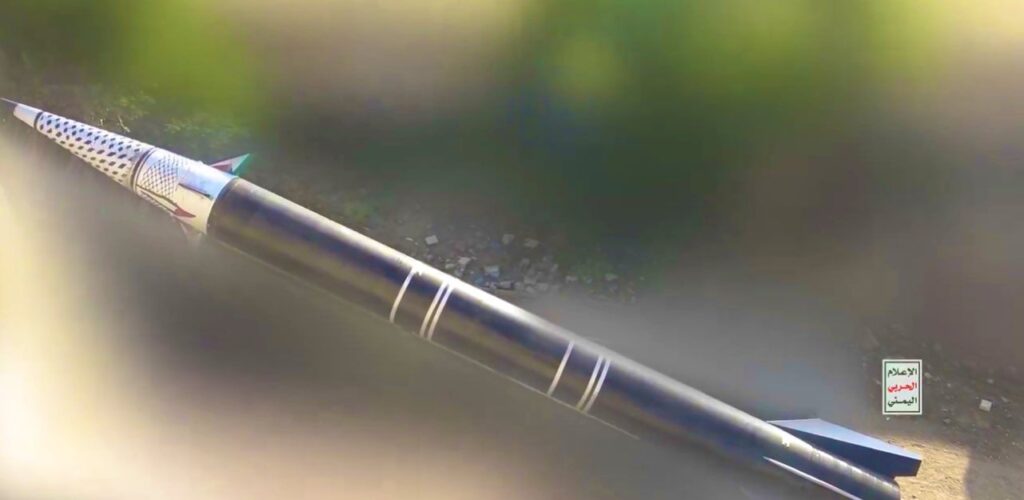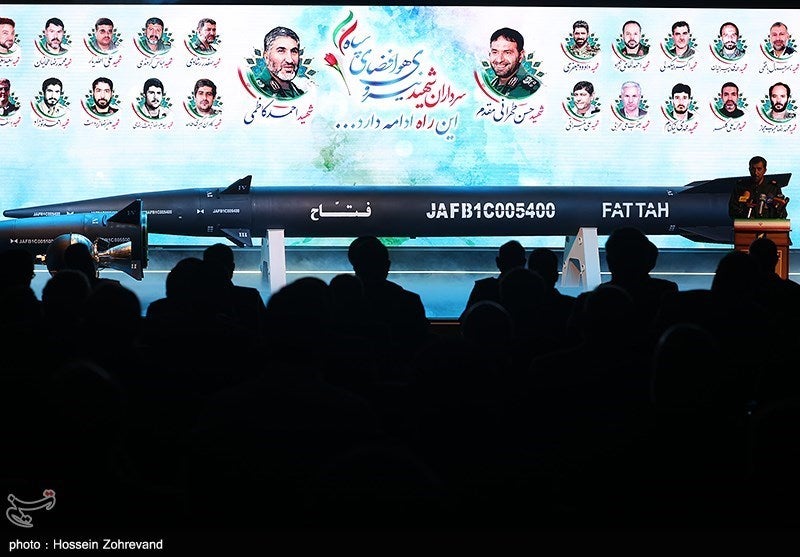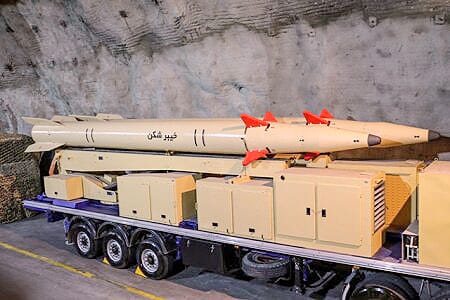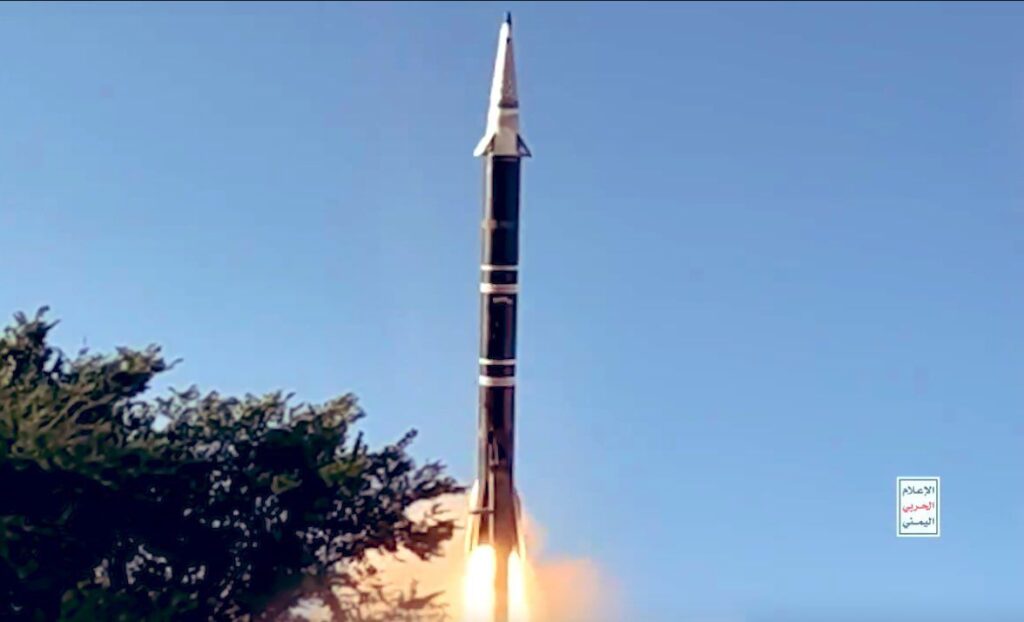Houthis Reveal The ‘Palestine’ Ballistic Missile For The First Time, Which They Claim to Have Developed Domestically
Last week, the Rocket Force, which is affiliated with Iran’s Houthi movement in Yemen, unveiled a new ballistic missile that they claimed to have developed domestically. The missile, called ‘Palestine’, was revealed during an operation by Yemeni rebels, also known as Ansarullah, against the IDF military base in the southern Israeli port city of Eilat (Umm Al-Rashrash).
The Houthi press center released footage of the operation, which showed the new ballistic missile, whose warhead was painted with a black and white Palestinian keffiyeh pattern, a symbol of Palestinian nationalism and solidarity in the fight against Israel, being launched from a mobile launcher and quickly rising into the air. Although the ‘Palestine’ ballistic missile was not seen advancing towards its target in the video, the Houthis claimed the operation was successful. According to the Israel Defense Forces (IDF), the surface-to-surface missile fired “from the direction of the Red Sea” only triggered air attack sirens and was neutralized without causing any damage or injury using the Arrow air defense system.
Brigadier General Yahya Saree, a Houthi military spokesman, stated that the attack with the “Palestine” ballistic missile was carried out in retaliation for the “American-British aggression” against Palestine and Yemen, adding that “the Yemeni Armed Forces will persist their military operations in support and in solidarity with the oppressed Palestinian people until the aggression stops and the siege on the Palestinian people in the Gaza Strip is lifted. Allah is sufficient for us, and He is the best disposer of affairs, the best protector, and the best helper. “

While the Houthis did not reveal the details of the new ballistic missile, which they described as indigenous, the Associated Press (AP) noted that “Palestine” is similar to the Iranian Revolutionary Guards’ “Fattah-1” medium-range hypersonic ballistic missile. Some Iranian analysts speculated that this missile was a repainted and renamed version of the “Kheibar Shekan 2” ballistic missile, which also belongs to the Iranian Revolutionary Guard. Given that the Houthis lack the equipment and expertise to develop a ballistic missile domestically and that Iran has provided the majority of the weapons they have used to date, despite being subject to a United Nations arms embargo, these claims are strengthened.

Fattah-1, the first missile to draw attention due to its resemblance to the ‘Palestine’ ballistic missile, was unveiled for the first time in June last year at a ceremony in Tehran attended by senior military officials. Military officials stated at the ceremony that the Hypersonic Ballistic Missile, which uses a Maneuverable Reentry Vehicle (MaRV) warhead and is propelled by a solid fuel propulsion system, has a range of 1,400 kilometers and a cruise speed of 13-15 Mach. Kheibar Shekan or Kheibarshekan is a solid-fuel medium-range ballistic missile also operated by the Islamic Revolutionary Guard Corps Aerospace Forces. The missile, which was first unveiled in 2022 at a ceremony attended by Iranian military commanders commemorating the 43rd anniversary of the Iranian Revolution, has maneuverability at the terminal stage and is powered by a solid fuel engine to evade air defenses, similar to the Fattah-1. The claimed range of this missile, which Iranian authorities consider as “third generation,” is 1450 kilometers.

Time will tell if Iran’s decision to give the Houthis one of these two ballistic missiles, which it did not use in the retaliatory operation launched on April 13 in response to Israel’s attack on the Iranian Embassy in Damascus on April 1, poses a serious threat to Tel Aviv and US bases in the region in the long term. However, in any case, the Yemeni rebels’ possession of a medium-range ballistic missile will help further increase their capabilities in the region.

